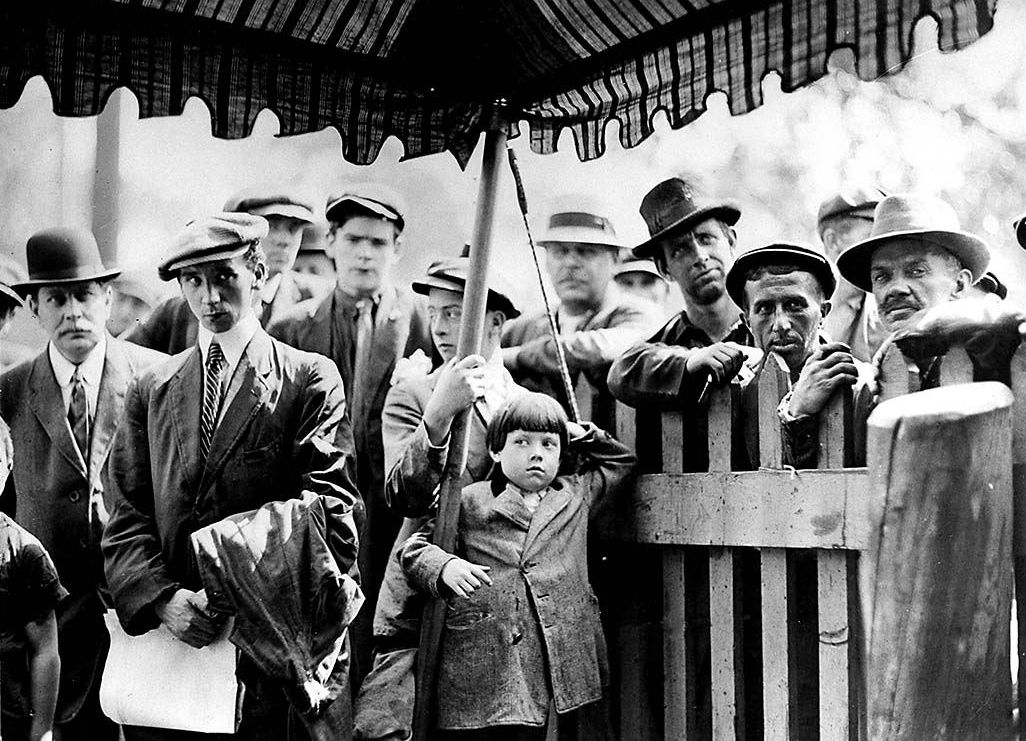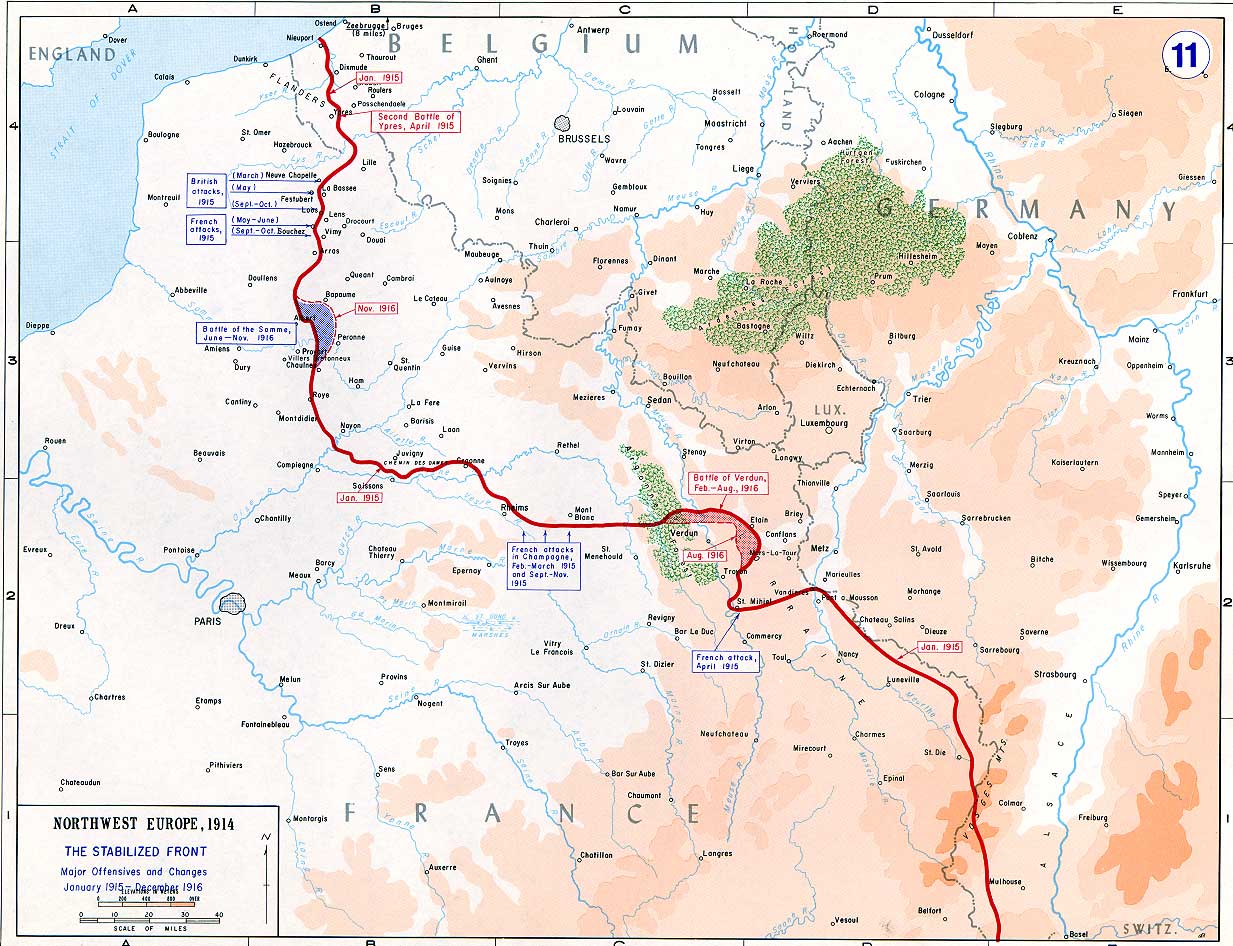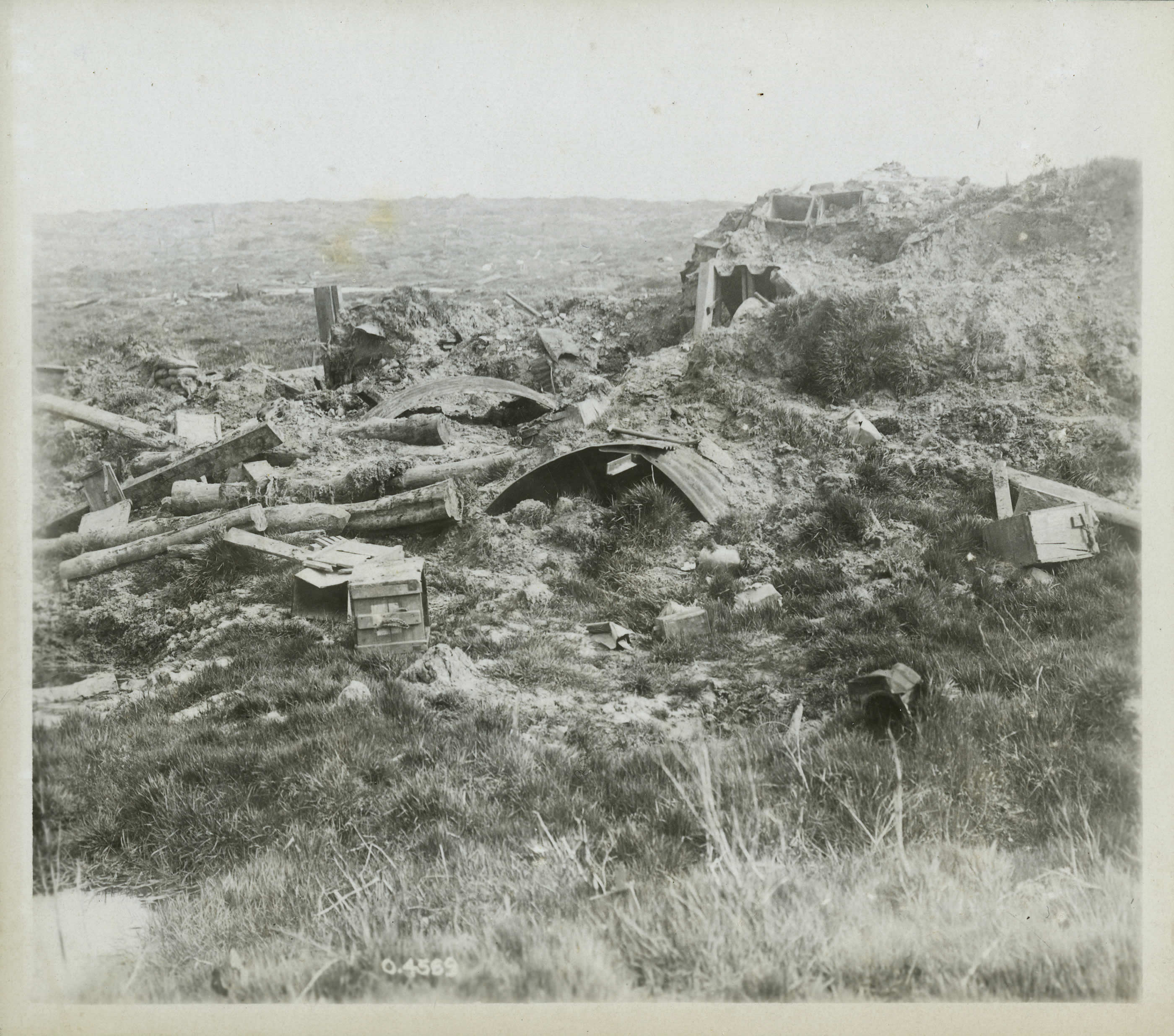|
31st Battalion, CEF
The 31st Battalion (Alberta), CEF, was an infantry battalion of the Canadian Expeditionary Force during the Great War. The battalion recruited in Alberta and was mobilized at Calgary. The battalion was authorized in November 1914 and embarked for Britain on 17 May 1915. On 18 September 1915 it disembarked in France, where it fought with the 6th Infantry Brigade, 2nd Canadian Division in France and Flanders until the end of the war. The battalion was disbanded in August 1920. History The battalion was raised at Calgary, and started recruitment in Alberta, on 7 November 1914. The battalion commander until late in the war was Lieutenant-Colonel Arthur Henry Bell of Calgary. On 17 May 1915, the battalion sailed for England on , with a complement of 36 officers and 1033 other ranks. After initial training in England, the battalion fought in Belgium and France, and was often at the forefront of the fighting at St. Eloi Craters, the Ypres Salient, Vimy Ridge (Thélus Village), Fresn ... [...More Info...] [...Related Items...] OR: [Wikipedia] [Google] [Baidu] |
Canadian Expeditionary Force
The Canadian Expeditionary Force (CEF; French: ''Corps expéditionnaire canadien'') was the expeditionary warfare, expeditionary field force of Canada during the First World War. It was formed on August 15, 1914, following United Kingdom declaration of war upon Germany (1914), Britain’s declaration of war on the German Empire, with an initial strength of one infantry Division (military), division. The division subsequently fought at Second Battle of Ypres, Ypres on the Western Front (World War I), Western Front, with a newly raised second division reinforcing the committed units to form the Canadian Corps. The CEF and corps was eventually expanded to four infantry divisions, which were all committed to the fighting in France and Belgium along the Western Front. A fifth division was partially raised in 1917, but was broken up in 1918 and used as reinforcements following heavy casualties. Personnel Recruitment The CEF was mostly volunteers; a bill allowing conscription was pa ... [...More Info...] [...Related Items...] OR: [Wikipedia] [Google] [Baidu] |
Battle Of Amiens (1918)
The Battle of Amiens, also known as the Third Battle of Picardy was the opening phase of the Allies of World War I, Allied offensive which began on 8 August 1918, later known as the Hundred Days Offensive, which ultimately led to the end of World War I. Allied forces advanced over on the first day, one of the greatest advances of the war, with Gen Henry Rawlinson, 1st Baron Rawlinson, Henry Rawlinson's British Fourth Army, with nine of its 19 Division (military), divisions supplied by the fast-moving Australian Corps of Lt General John Monash and Canadian Corps of Lt General Arthur Currie, and Gen Marie Eugène Debeney's French First Army playing a decisive role. The battle is also notable for its effects on both sides' morale and the large number of surrender (military), surrendering German Empire, German forces. This led Erich Ludendorff to later describe the first day of the battle as "the black day of the German Army". Amiens was one of the first major battles involving arm ... [...More Info...] [...Related Items...] OR: [Wikipedia] [Google] [Baidu] |
Somme, 1916
The Battle of the Somme (; ), also known as the Somme offensive, was a battle of the First World War fought by the armies of the British Empire and the French Third Republic against the German Empire. It took place between 1 July and 18 November 1916 on both sides of the upper reaches of the river Somme (river), Somme in France. The battle was intended to hasten a victory for the Allies of World War I, Allies. More than three million men fought in the battle, of whom more than one million were either wounded or killed, making it one of the List of battles by casualties, deadliest battles in human history. The French and British had planned an offensive on the Somme during the Chantilly Conferences, Chantilly Conference in December 1915. The Allies agreed upon a strategy of combined offensives against the Central Powers in 1916 by the French, Russian, British and Italian armies, with the Somme offensive as the Franco-British contribution. The French army was to undertake the m ... [...More Info...] [...Related Items...] OR: [Wikipedia] [Google] [Baidu] |
Battle Of Mont Sorrel
The Battle of Mont Sorrel (Battle of Mount Sorrel) was a local operation in World War I by three divisions of the German 4th Army and three divisions of the British Second Army in the Ypres Salient, near Ypres in Belgium, from 2 to 13 June 1916. To divert British resources from the build-up being observed on the Somme, the XIII (Royal Württemberg) Corps and the 117th Infantry Division attacked an arc of high ground defended by the Canadian Corps in Flanders. The German forces captured the heights at Mount Sorrel and Tor Top, before entrenching on the far slope of the ridge. Following a number of attacks and counterattacks, two divisions of the Canadian Corps, supported by the 20th Light Division and Second Army siege and howitzer battery groups, recaptured the majority of their former positions. Background Mount Sorrel Located in the Ypres Salient, east of Ypres, Belgium and from Hill 60, the Battle of Mount Sorrel took place along a ridge between Hooge and Zwart ... [...More Info...] [...Related Items...] OR: [Wikipedia] [Google] [Baidu] |
North Alberta Regiment
The North Alberta Regiment was an infantry regiment of the Non-Permanent Active Militia of the Canadian Militia (now the Canadian Army). In 1936, the regiment was disbanded as a result of a country-wide reorganization of the Canadian Militia. Lineage The North Alberta Regiment * Originated on 1 April 1910, in Calgary, Alberta, as the '' 103rd Regiment (Calgary Rifles)''. * Reorganized on 15 March 1920, as two separate regiments: ''The Calgary Regiment'' (now The King's Own Calgary Regiment (RCAC) and The Calgary Highlanders (10th Canadians)) and '' The Alberta Regiment''. * Reorganized on 15 May 1924, into two separate regiments: '' The South Alberta Regiment'' and ''The North Alberta Regiment''. * Disbanded on 1 February 1936. Perpetuations Great War * 31st Battalion (Alberta), CEF * 151st (Central Alberta) Battalion, CEF * 191st (Southern Alberta) Battalion, CEF * 192nd (Crow's Nest Pass) Battalion, CEF After the reorganization of The Alberta Regiment in 1924, the ... [...More Info...] [...Related Items...] OR: [Wikipedia] [Google] [Baidu] |
The South Alberta Regiment
The South Alberta Regiment (SAR) was a regiment of the Canadian Army that existed from 1924 to 1954. Originally infantry, in February 1942 it became an armoured unit. During World War II the Regiment fought from July 1944 to May 1945 in France, Belgium, the Netherlands, and Germany. History Early history The regiment was created in 1924 as infantry after The Alberta Regiment was split into two separate regiments: ''The North Alberta Regiment'' (disbanded in 1936) and ''The South Alberta Regiment''. Second World War The South Alberta Regiment mobilized in 1940 as part of the 4th Canadian Infantry Division. When the division was reorganized as an armoured formation to satisfy demand for a second Canadian armoured division, the South Alberta Regiment was named ''29th Armoured Regiment (The South Alberta Regiment)'' and received Ram tanks in February 1942. The unit was again renamed as ''29th Armoured Reconnaissance Regiment (The South Alberta Regiment)'' in January 1943. T ... [...More Info...] [...Related Items...] OR: [Wikipedia] [Google] [Baidu] |
The Alberta Regiment
The Alberta Regiment was a short-lived infantry regiment of the Non-Permanent Active Militia of the Canadian Militia (now the Canadian Army). The regiment was formed by the reorganization of the 103rd Calgary Rifles into two separate regiments and the incorporation of a number of Canadian Expeditionary Force battalions into the peacetime militia. In 1924, the regiment was split into two separate regiments: The South Alberta Regiment (now part of The South Alberta Light Horse) and The North Alberta Regiment (disbanded in 1936). Lineage The Alberta Regiment * Originated on 1 April 1910, in Calgary, Alberta, as the '' 103rd Regiment (Calgary Rifles)''. * Reorganized on 15 March 1920, as two separate regiments: ''The Calgary Regiment'' (now ''The King's Own Calgary Regiment (RCAC)'' and '' The Calgary Highlanders (10th Canadians)'') and ''The Alberta Regiment''. * Reorganized on 15 May 1924, into two separate regiments: ''The South Alberta Regiment'' and ''The North Alberta Reg ... [...More Info...] [...Related Items...] OR: [Wikipedia] [Google] [Baidu] |
The South Alberta Light Horse
The South Alberta Light Horse (SALH) is a Canadian Army armoured reconnaissance regiment of the Canadian Army Reserve. It traces its complicated lineage to the Rocky Mountain Rangers, and claims its direct ancestry to the 15th Light Horse, along with various other Alberta based cavalry units. The "Light Horse" designation comes from its light cavalry and mounted infantry origins. The SALH is part of 41 Canadian Brigade Group of the 3rd Canadian Division, and is based in Medicine Hat, Edmonton and Lethbridge, Alberta. History Early history The South Alberta Light Horse traces its beginnings to the period of the North-West Rebellion, Riel Rebellion of 1885. During this conflict the Rocky Mountain Rangers (1885), Rocky Mountain Rangers (RMR) of Fort Macleod, which comprised 150 officers and men, were tasked with the protection of the area ranging from the U.S. border to the High River and from the Rockies to Medicine Hat. The RMR saw no action during their three months of existence ... [...More Info...] [...Related Items...] OR: [Wikipedia] [Google] [Baidu] |
Banff, Alberta
Banff is a resort town in Banff National Park, Alberta, Canada, in Alberta's Rockies along the Trans-Canada Highway, west of Calgary, east of Lake Louise, Alberta, Lake Louise, and above Banff was the first municipality to incorporate within a Canadian national park. The town is a member of the Calgary Metropolitan Region, Calgary Regional Partnership. Banff is one of Canada's most popular tourist destinations. Known for its mountainous surroundings and Banff Upper Hot Springs, hot springs, it is a destination for outdoor sports and hiking, Mountain biking, biking, scrambling and skiing. Sunshine Village, Mt Norquay, Ski Norquay and Lake Louise Ski Resort are nearby ski resorts within the national park. Toponymy The area was named Banff in 1884 by George Stephen, 1st Baron Mount Stephen, George Stephen, president of the Canadian Pacific Railway, recalling his birthplace near Banff, Aberdeenshire, Banff, Scotland. The Canadian Pacific built a series of grand hotels along the ... [...More Info...] [...Related Items...] OR: [Wikipedia] [Google] [Baidu] |
Parks Canada
Parks Canada ()Parks Canada is the applied title under the Federal Identity Program; the legal title is Parks Canada Agency (). is the agency of the Government of Canada which manages the country's 37 National Parks, three National Marine Conservation Areas, 172 National Historic Sites, one National Urban Park ( Rouge), and one National Landmark ( Pingo). It also manages 11 proposed national park areas (National Park Reserves). Parks Canada is mandated to "protect and present nationally significant examples of Canada's natural and cultural heritage, and foster public understanding, appreciation, and enjoyment in ways that ensure their ecological and commemorative integrity for present and future generations". The agency also administers lands and waters set aside as potential national parklands, including ten National Park Reserves and one National Marine Conservation Area Reserve. More than of lands and waters in national parks and national marine conservation areas ha ... [...More Info...] [...Related Items...] OR: [Wikipedia] [Google] [Baidu] |
Occupation Of The Rhineland
The Occupation of the Rhineland placed the region of Germany west of the Rhine river and four bridgeheads to its east under the control of the victorious Allies of World War I from 1December 1918 until 30June 1930. The occupation was imposed and regulated by articles in the Armistice of 11 November 1918, the Treaty of Versailles and the parallel agreement on the Rhineland occupation signed at the same time as the Versailles Treaty. The Rhineland was demilitarised, as was an area stretching fifty kilometres east of the Rhine, and put under the control of the Inter-Allied Rhineland High Commission, which was led by a French commissioner and had one member each from Belgium, Great Britain and the United States (the latter in an observer role only). The purpose of the occupation was to give France and Belgium security against any future German attack and serve as a guarantee for Germany's World War I reparations, reparations obligations. After Germany fell behind on its payments in ... [...More Info...] [...Related Items...] OR: [Wikipedia] [Google] [Baidu] |
Battle Of The Lys And The Escaut
The Battle of the Lys and the Escaut was the third and last phase of the Second Battle of Belgium () or the Ypres-Lys Offensive, and took place in Belgium between 20 October and 11 November 1918. Background In August 1918, the Allied Command launched an offensive across the Western Front. In Belgium the (GAF) was formed under the command of King Albert I of Belgium, with the French General Jean Degoutte as Chief of Staff, comprising twelve Belgian divisions, ten divisions of the British Second Army and six divisions of the French Sixth Army. In the first phase of the offensive, the German 4th Army was defeated in the Fifth Battle of Ypres and Passchendale was retaken. Mud and a collapse of the supply-system had stopped the advance in early October but by the middle of the month the GAF launched the second phase of the offensive, the Battle of Courtrai. The French took Roulers, the Belgians Ostend, Bruges and Zeebrugge and the British Courtrai, Lille and Douai. The ad ... [...More Info...] [...Related Items...] OR: [Wikipedia] [Google] [Baidu] |









